It turns out that the OP simply wants each form's status bar to display all hints from that form (not minding it also displaying hints from other forms as well).
So this is trivial. Just give all your forms a status bar and drop a TApplicationEvents component onto each form. Create a handler for each component's OnHint event:
procedure TForm6.ApplicationEvents1Hint(Sender: TObject);
begin
StatusBar1.SimpleText := Application.Hint;
end;
And then everything will just work:

Update
It seems that the OP does mind that. One solution, then, is to do like this:
procedure TForm6.ApplicationEvents1Hint(Sender: TObject);
begin
if IsHintFor(Self) then
StatusBar1.SimpleText := Application.Hint
else
StatusBar1.SimpleText := '';
end;
on all your forms. But only one time do you need to define the helper function
function IsHintFor(AForm: TCustomForm): Boolean;
begin
Result := False;
var LCtl := FindDragTarget(Mouse.CursorPos, True);
if Assigned(LCtl) then
Result := GetParentForm(LCtl) = AForm;
end;
This unfortunately does waste a few CPU cycles, since it calls FindDragTarget several times each time Application.Hint is changed, in a sense needlessly since the VCL already has called it once. But this shouldn't be detectable.

Update 2
To make this work also for menus (which may also be navigated using the keyboard, in which case the mouse cursor may be anywhere on the screen), I think the following additions will suffice:
Declare a global variable next to the IsHintFor helper function:
var
GCurrentMenuWindow: HWND;
function IsHintFor(AForm: TCustomForm): Boolean;
and extend this function like so:
function IsHintFor(AForm: TCustomForm): Boolean;
begin
if GCurrentMenuWindow <> 0 then
Result := Assigned(AForm) and (GCurrentMenuWindow = AForm.Handle)
else
begin
Result := False;
var LCtl := FindDragTarget(Mouse.CursorPos, True);
if Assigned(LCtl) then
Result := GetParentForm(LCtl) = AForm;
end;
end;
Then, to make menu bars work, add the following to each form class with a menu bar:
procedure WMEnterMenuLoop(var Message: TWMEnterMenuLoop); message WM_ENTERMENULOOP;
procedure WMExitMenuLoop(var Message: TWMExitMenuLoop); message WM_EXITMENULOOP;
end;
implementation
procedure TForm6.WMEnterMenuLoop(var Message: TWMEnterMenuLoop);
begin
inherited;
GCurrentMenuWindow := Handle;
end;
procedure TForm6.WMExitMenuLoop(var Message: TWMExitMenuLoop);
begin
inherited;
GCurrentMenuWindow := 0;
end;
Finally, to make context menus work, add the following to the unit with the helper function:
type
TPopupListEx = class(TPopupList)
protected
procedure WndProc(var Message: TMessage); override;
end;
{ TPopupListEx }
procedure TPopupListEx.WndProc(var Message: TMessage);
begin
inherited;
case Message.Msg of
WM_INITMENUPOPUP:
for var LMenu in PopupList do
if TObject(LMenu) is TPopupMenu then
if TPopupMenu(LMenu).Handle = Message.WParam then
begin
var LComponent := TPopupMenu(LMenu).PopupComponent;
if LComponent is TControl then
begin
var LForm := GetParentForm(TControl(LComponent));
if Assigned(LForm) then
GCurrentMenuWindow := LForm.Handle;
end;
Break;
end;
WM_EXITMENULOOP:
GCurrentMenuWindow := 0;
end;
end;
initialization
FreeAndNil(PopupList);
PopupList := TPopupListEx.Create;
end.
Result:

Disclaimer: Not fully tested.


